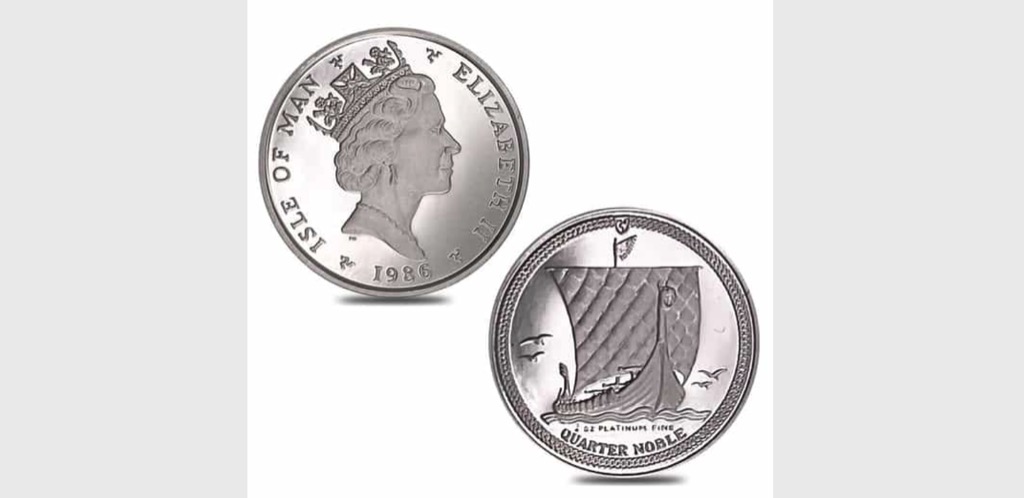

Welcome to SurvivalBlog’s Precious Metals Month in Review, where we take a look at “the month that was” in precious metals. Each month, we cover gold’s performance and the factors that affect gold prices.
What Did Gold Do in September?
Gold prices surprised observers by resisting selling pressure until the last part of the month. A breakdown in stocks, bonds, and gold caused by abysmal consumer confidence and plunging new home sales on September 26th pushed gold prices to $1,919. Bond yields hit 4.6% and the dollar index rose to 106.82 on the 27th, forcing December gold $29 lower and into a “death cross” where the 50-day moving average falls beneath the 200-day moving average.
Gold prices saw no relief at the end of the month, dropping another $12.50 to $1,866 an ounce on the 29th to the end September with a loss of $100. $80 of this loss came during the last week of the month, which shows the rapid deterioration of the gold price as the automakers strike continued and the economy recoiled from the threat of a government lockdown.
Factors Affecting Gold This Month
“HIGHER FOR LONGER”
The Fed continued pushing its “higher rates for longer” mantra while threatening to hike rates one more time before the end of the year. This kept bond yields elevated and lent strength to the dollar, but did not affect gold nearly as much as during previous times when the market was under these conditions.
This support for gold was in part due to sustained gold purchases by central banks and partly due to safe-haven demand in China as the country’s largest property developers continued to implode.
BOND YIELDS
One sector that took the Fed at its word was the Treasury market. The 10-yr note began the month barely above 4.2%. Hotter-than-expected inflation numbers in the first half of the month did little to move yields. This changed right before the Federal Reserve Open Market Committee meeting on September 20th.
Yields of both the 5-yr and 10-yr notes hit the highest point since 2007 on the 19th. 10-yr yields jumped from 4.26% to 4.48% after the FOMC meeting on the 20th. The selloff in bonds was just beginning as yields climbed from 4.44% to 4.558% the following Monday, 4.62% on the 26th, 4.626% on the 27th, and 4.696% on the 28th.
The extreme moves in Treasury yields at the end of the month were due more to the near-certainty of a government shutdown than any underlying economic factors. Money flooded out of stocks, bonds, the dollar, and gold and into money market mutual funds.
The yield curve on Treasuries has inverted, with the yields on shorter-date notes rising above longer-term notes. This has historically been a signal of an upcoming recession.
DOLLAR STRENGTH
The strength of the dollar in September was due in large part to worsening economic conditions in Europe and especially China, where the government had to institute several stimulus measures to rescue the economy and reverse a serious devaluation of the yuan. The refusal of the Bank of Japan to raise rates sent the yen to its weakest level in decades, adding another level of support to the dollar.
The dollar rose from 103.64 to 104.10 over the first two sessions of the month. It then trended between 104.5 and 105 until the middle of the month, staying above 105 until breaking above 106 for the last three days of September.
PENDING GOVERNMENT SHUTDOWN
Politics trumped economics at the end of the month as House Freedom Caucus members used the threat of a government shutdown to force Democrats and establishment Republicans to accept their demands. The inability of the two sides to agree on a spending bill all but guarantees a government shutdown, which may push the country into a recession.
The ongoing strikes by autoworkers are already pushing GDP estimates for the fourth quarter lower, and the added stress of a government shutdown will magnify the damage. One bright spot is that this all may force the Fed to cut rates, which will lower bond yields, which will help gold prices.
Central Banks
The European Central Bank raised rates for the tenth time in a row this month, bringing interest rates from -0.5% to 4% – the highest rate since the euro was introduced in 1999.
ECB president Christine Lagarde did not rule out future rate hikes as the EU threatens to continue its fall into stagflation. The current annual forecast for EU GDP is 0.7%, while inflation is still above 5%.
—————
Bank of England Governor Andrew Bailey and BoE Policy Committee member Swati Dhingra gave conflicting messages on the rate hike policy of the central bank going forward, pushing the British pound lower and breeding confusion in the markets.
—————
The Reserve Bank of Australia paused hiking rates this month but reserved the right to resume hikes if needed.
————–
The Bank of Canada stood pat on interest rates at 5% as the Canadian economy slowed down, unwilling to cause a recession by hiking rates to fight inflation. The Canadian economy is suffering from the effects of massive wildfires that destroyed large portions of the country.
—————
The Russian central bank raised interest rates by 100 bp (1%) to 13% to counter severe devaluation of the ruble in September. The central bank raised rates by 350 bp in August to 12%.
—————
ANZ says that the US dollar will weaken next year as the Fed cuts rates. This will provide a tailwind for gold prices.
—————
Another JP Morgan gold trader was sent to prison this month. Christopher Jordan was handed a six-month prison sentence. This follows the 2-year and 1-year sentences of two other senior JP Morgan gold traders. Two other traders went state’s evidence against the trio, avoiding jail time by cooperating with prosecutors.
Central Bank Gold Purchases
A net of 54.9 tons of gold was purchased by central banks in July, according to the World Gold Council. The biggest buyer was the People’s Bank of China, purchasing 23 tons. The central bank of Poland was right behind, adding 22.4 tons to their gold reserves. Turkey was next, purchasing 16.8 tons. Other buyers were Qatar with 3.1 tons; Singapore, with 2 tons; and the Czech Republic with 1.9 tons.
The largest seller was Uzbekistan, shedding 11.2 tons of gold. Kazakhstan was the only other seller of note, selling 3.9 tons.
Gold ETFs
Gold ETFs experienced their third consecutive month of net losses in August. Sharply lower gold prices in the last half of the month led to a net 45.6 tons of outflows. This was nearly all attributable to North American gold ETFs, which saw 44.2 tons of outflows – the worst monthly performance in eleven months.
North America -44.2t
Europe -8.2t
Asia +6.6t
Other +0.2t
The US was the biggest loser by far, with 43.5 tons of outflows from gold ETFs. Outflows from UK gold ETFs fell drastically, with only 2.7 tons of redemptions.
(“Other” are Australia, South Africa, Turkey, Saudi Arabia, and UAE.)
On The Retail Front
Since the US Mint can run more than a week behind in reporting bullion sales, we have begun including the final sales totals for the previous month as well as preliminary numbers for the current month.
Final US Mint bullion numbers for August were 3,124,000 1 oz American Silver Eagles, 94,500 oz of American Gold Eagles, and 19,500 1 oz American Gold Buffalo coins.
The US Mint hasn’t updated bullion sales for September since the middle of the month. The totals as they stand right now are 1,502,000 Silver Eagles, 26,000 ounces of Gold Eagles, and 15,500 Gold Buffaloes.
—————
Perth Mint bullion sales were pounded by a strong dollar and elevated bond yields in August, sending them to the lowest level since February 2020.
Gold bullion coin and bar sales totaled 34,875 oz in August, down from an already-low 44,009 oz in July. August’s sales were 59% lower than this time last year.
Perth Mint silver bullion sales hit a three-year low of 792,503 oz in August. This was down 52% from last August.
Market Buzz
Gold hit record highs in China and Japan this month, as both the yuan and yen weakened against a rampaging dollar.
—
————
CHINA finally issued new quotas to gold importers now that they have been able to stabilize the yuan. This should ease Chinese gold price premiums of up to $120 over international spot prices back to normal.
—
————
Investors have shifted to gold by the most since 2012, according to JP Morgan.
—
————
Jan Nieuwenhuijs at Gainesville Coins digs down into the data and gives us an update on the “real” amount of gold held by the world’s central banks in Estimated World Official Gold Holdings Reach Record High.
Confirming the theory that large “off the books” gold purchases by the People’s Bank of China have been supporting international gold prices, Jan uses his contacts in the Asian gold market and discrepancies in central bank gold reports to estimate that Estimated Chinese Official Gold Reserves Cross 5,000 Tonnes. —
————
Lisa Shaylett, Chief Investment Officer at Morgan Stanley Wealth Management, says that gold prices have been “extremely resilient” against rising real rates. Gold is trending about $200 higher than it did the last time economic conditions were similar. —
————
GERMANY has hiked VAT on non-EU silver bullion coins to 19%, basically collapsing sales of American Silver Eagles, Maple Leafs, and Australian silver in the country. —
————
The World Platinum Investment Council forecasts a record platinum deficit of 1 million ounces this year. Demand is expected to grow by 27% to 8.23 million ounces, while estimated production will remain stagnant at 7.22 million ounces.
Looking Ahead To Next Month
The big market-moving event will be whether Congress shuts the government down or not, and how long a shutdown will last. Bond yields will spike even higher as the creditworthiness of the US worsens. The length of the shutdown will be the major influence on the economy next month, outweighing the ongoing automaker’s strike.
Viking treasure is just popping out of the ground in Norway this month!
First, we have the story of a 51-year-old Norwegian man who bought a metal detector to help him “get off the couch” and promptly uncovered nine small Viking gold pendants, three gold rings, and ten gold “pearls” in what is being called the “treasure find of the century.”
This has been followed by a family who discovered gold Viking burial goods in their yard while using a metal detector to look for a lost earring! (They still haven’t found the lost earring, in all the excitement.)
Note: This column is intended for educational purposes only. It is not intended as investment advice. Past performance does not guarantee future results.
– Steven Cochran of Gainesville Coins


